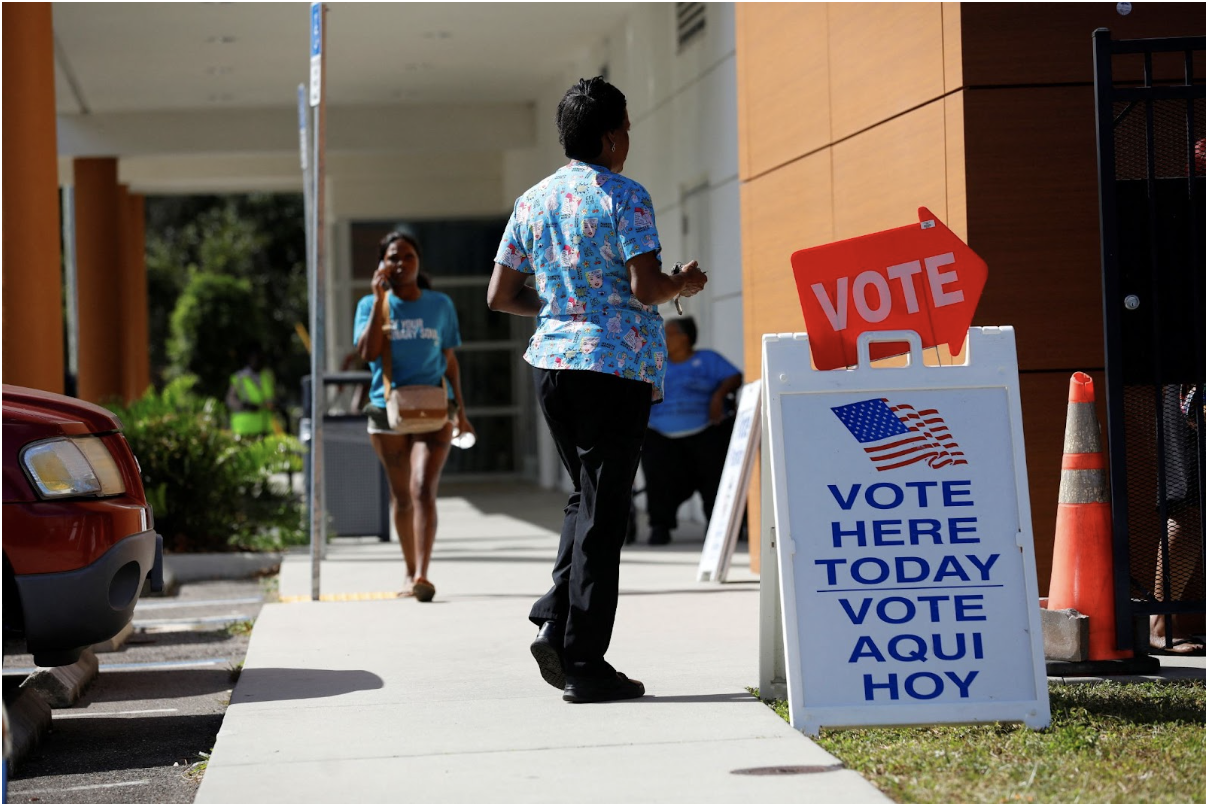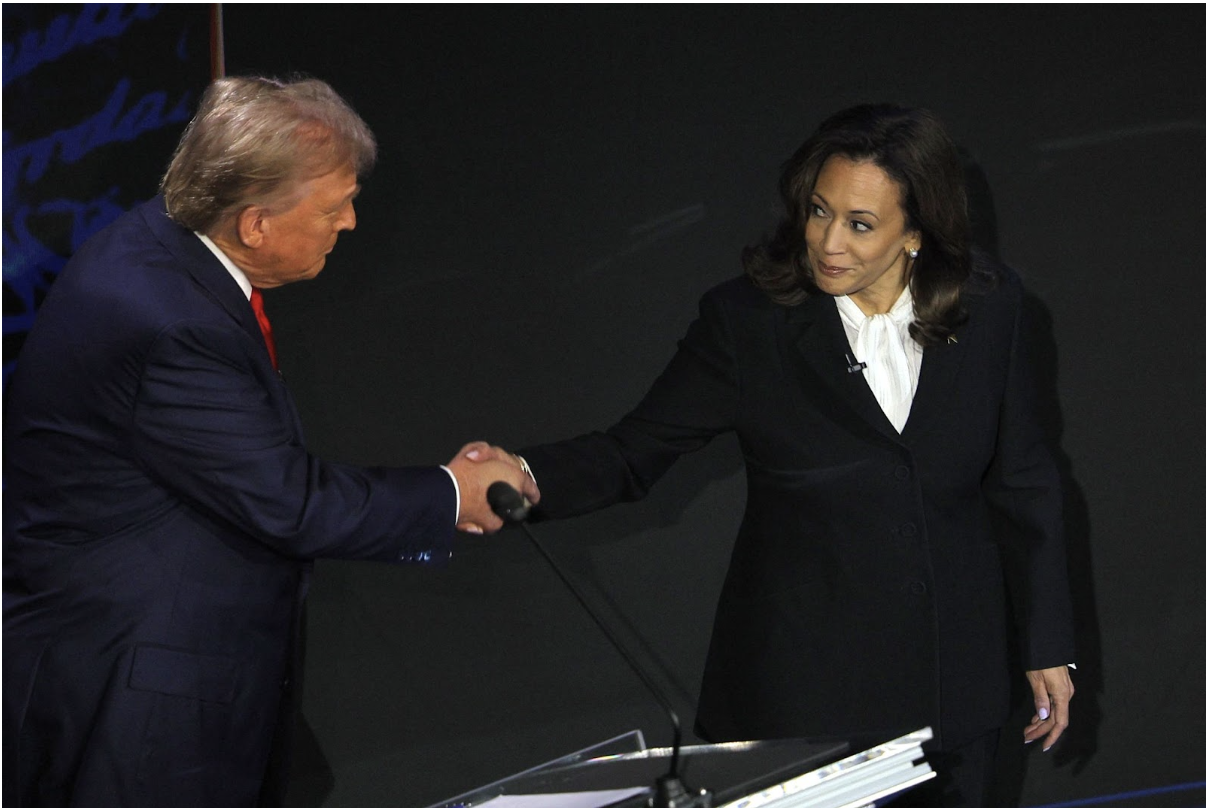

U.S. citizens are heading to the polls today to elect their next president, marking the end of a turbulent presidential race. Here’s what you need to know about today’s election.
1. Who is Running for President?
The race began between Democratic President Joe Biden and former Republican President Donald Trump, both of whom had won their respective parties’ primaries. However, after a disastrous debate performance, President Biden withdrew from the race in July. Vice President Kamala Harris, 60, subsequently won the Democratic Party’s nomination instead.

Kamala Harris, a former senator, San Francisco prosecutor, and California attorney general, would make history as the first woman and the first woman of colour to be elected president of the U.S. Her running mate is Governor Tim Walz of Minnesota.
Donald Trump, 78, is running for the White House for the third time. He is a businessman and served as the 45th President of the U.S. from 2017 to 2021. Trump has chosen Senator JD Vance of Ohio, author of “Hillbilly Elegy: A Memoir of a Family and Culture in Crisis,” as his running mate.
Though there are other candidates, the race is primarily between Donald Trump and Kamala Harris from the major parties in the U.S.
2. What are the Candidates’ Positions on Key Issues?
Harris and Trump have very different visions for the country on a range of issues, including the economy, climate, and social policies.
- Abortion: Harris has made abortion rights a central part of her campaign, advocating for legislation that would enshrine reproductive rights nationwide. Trump, however, has taken credit for overturning Roe v. Wade after appointing three conservative justices to the Supreme Court.
- Climate: Harris is expected to continue President Joe Biden’s push to transition the U.S. economy away from fossil fuels, with tax incentives, for example. Trump, on the other hand, has pledged to reverse Biden’s investments in green technology and to expand oil, gas, and coal development.
- Migration: They also differ on the issue of migration. Harris has recently called for an “orderly and humane pathway to earned citizenship for hardworking people”, whereas Trump, who had built or upgraded 450 miles of U.S.-Mexico border wall as president, has vowed to finish it.
- Economy: Trump wants to lower the corporate tax rate, while Harris has proposed raising it.
3. How Do Voters Vote?
The U.S. allows voters to cast their ballots before Election Day. As a result, millions of U.S. citizens have already voted by mail or in-person, avoiding long lines and other inconveniences. According to the National Conference of State Legislatures, almost all states allow early voting.
Most states begin counting those ballots on Election Day; some require officials to wait until the polls are closed to begin counting.

On Election Day, which is today, everyone else goes to the polling places. Once the ballots have been counted, results start being released.
4. When is the Presidential Election Result Expected?
It is difficult to say: Given the tight competition in many states, media outlets may wait longer before projecting the winner. Harris and Trump have been neck-and-neck in the polls for weeks. Close races could lead to recounts.
For instance, in the key swing state of Pennsylvania, a statewide recount would be required if there’s a half-percentage point difference between the votes cast for the winning and losing candidates. In 2020, the difference was just over 1.1 percentage points.
In the 2020 election, it took four days until U.S. TV networks declared Joe Biden the winner, after the result in Pennsylvania became clearer. Voters have had to wait much less in other recent elections. In 2016, Donald Trump was declared the winner the day after the election. When Barack Obama secured a second term in 2012, his victory was projected on polling day itself.
5. What is the Current State of the Race?
The race is extremely close. According to the final New York Times/Siena College national poll published on 24 October, Harris and Trump are tied in the popular vote at 48%.
However, the president is not elected directly by the popular vote but by the Electoral College. The Electoral College consists of 538 votes, distributed in varying proportions among the fifty states. To win, a candidate must secure at least 270 Electoral College votes.
Except for Maine and Nebraska, all states use a winner-takes-all system, awarding all of their Electoral College votes to the candidate with the most votes statewide.
This year’s race is likely to hinge on seven key battleground states – Georgia, Michigan, Nevada, Arizona, North Carolina, Pennsylvania, and Wisconsin. Latest polling data shows Trump with small leads in four of these states, while Harris holds narrow leads in two. Pennsylvania remains tied.
But even in these battleground states, the margins are so razor-thin that leading political analysts are reluctant to stick their necks out and predict the outcome.
6. What Happens Next?
Once the election is decided, the president-elect will form a transition team to plan the transfer of power. The 47th president will be inaugurated on 20 January at the U.S. Capitol.
Read Full Story













Facebook
Twitter
Pinterest
Instagram
Google+
YouTube
LinkedIn
RSS